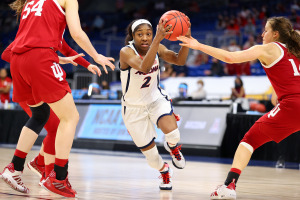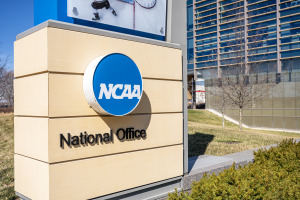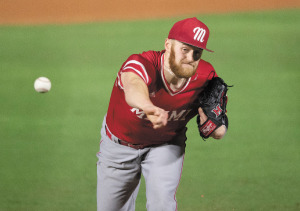NCAA recommends routine COVID testing only for unvaccinated
The updated guidance mostly follow CDC recommendations and come as football practices start across the country.
The updated guidance mostly follow CDC recommendations and come as football practices start across the country.

The review, commissioned by the NCAA in the wake of an uproar over inferior facilities at the women’s basketball championships, offers a detailed accounting of the ways systemic inequities can disadvantage women athletes and constrain the growth of women’s sports.
Notre Dame is among the universities that conferences are eying as they shuffle teams to boost their strength.

Revenue was down more than 50% over the previous fiscal year, from more than $1.1 billion to just more than $520 million, mostly because the lucrative college basketball tournaments were canceled as the coronavirus hit the United States early in 2020.

NCAA President Mark Emmert said the NCAA’s more than 1,100 member schools should consider a less homogenous approach to the way sports are governed and re-examine the current three-division structure, which includes 355 Division I colleges.

This month, the dam finally broke on college athletes getting paid as the NCAA scaled back its rules. But as some athletes cash in on that shift, a growing number of young basketball players are forgoing college and even high school to play in upstart professional leagues.

Four men, who might be having the summers of their baseball lives. Four roads that led through the state of Indiana.

The NCAA Board of Directors approved one of the biggest changes in the history of college athletics Wednesday, clearing the way for nearly a half-million athletes to start earning money based on their fame and celebrity.
Here are some questions and answers about “NIL,” the shorthand most commonly used for athlete compensation tied to use of their name, image or likeness.
Just how much of a market there might be for so-called “name, image and likeness” compensation is unknown, but the next few months will say a lot.

The latest strategy to provide clarity to a dramatic change in NCAA policy comes days after the Supreme Court handed down a ruling that left the association exposed to future legal attacks.

After the NCAA’s stinging legal loss this week, college sports leaders are acknowledging the path forward will have to include changes that once seemed antithetical to the mission.
The high court delivered a heavy blow to a defense the NCAA has used for years, that in its role as a shepherd of amateur sports it deserves “latitude” under antitrust laws.

In a ruling that could help push changes in college athletics, the high court on Monday unanimously sided with a group of former college athletes in a dispute with the NCAA over rules limiting certain compensation.

Six states have laws set to go into effect July 1 that will permit college athletes to be paid for endorsements, personal appearances and social media posts, setting up the possibility of patchwork rules from coast to coast for thousands of athletes.
Organizers from more than 20 group met last week to evaluate security and logistical needs and discuss public events, space use and contingency plans for the Jan. 8 spectacle at Lucas Oil Stadium.
The College Football Playoff announced Thursday it will consider expanding from four to 12 teams to settle the championship, with six spots reserved for the highest-ranked conference champions and the other six going to at-large selections.

Bachman had good freshman and sophomore seasons, then dropped his pitching release slot a tad; toned up his 6-1, 235-pound frame; developed a killer slider, and turned into a flame thrower.
The NCAA Division I Board of Directors ratified a rule change Wednesday that will allow all athletes who have not yet transferred the ability to do so one time in a college career and be immediately eligible to play.

Boundaries—particularly regarding transfers—that were stifling but also stabilizing are being dismantled piece by piece.